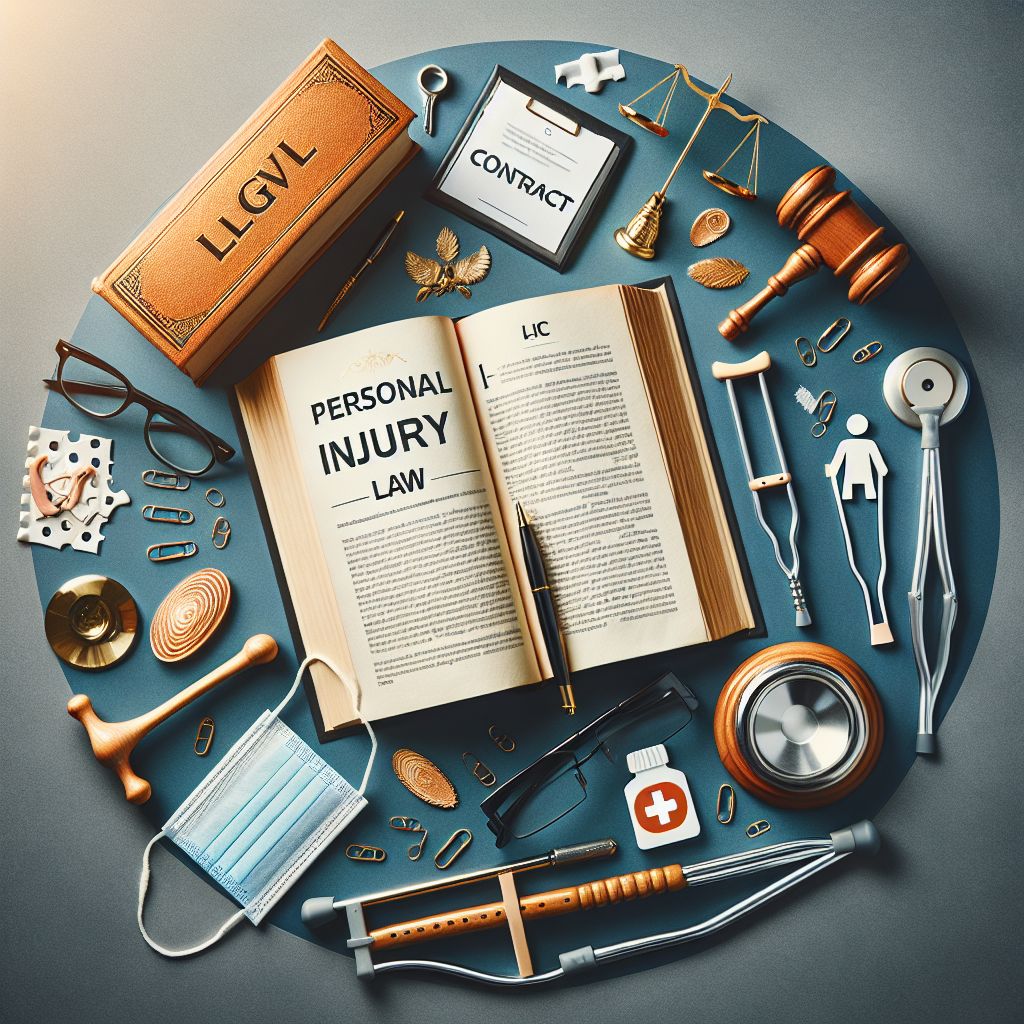Key Takeaways
- Medical records are essential for proving the extent and cause of your injuries in a personal injury case.
- Immediately after an injury, document everything, from symptoms to treatments, to strengthen your case.
- Hospital admission and discharge records provide a timeline of your treatment and recovery process.
- Doctor’s examination notes detail your injuries and the impact on your daily life.
- Consistent and comprehensive documentation can prevent common pitfalls that weaken injury claims.
The Critical Role of Medical Records in Personal Injury Cases
When you’re involved in a personal injury case, medical records are your best ally. They don’t just tell the story of your injuries; they validate your experience and help establish a connection between the incident and the harm you’ve suffered. This connection is crucial in convincing insurers or a court about the legitimacy of your claims.
Think of your medical records as a roadmap. They guide the narrative of your injury, illustrating the journey from the moment of impact to the recovery phase. This journey, documented meticulously, can make or break your case. Most importantly, these records serve as concrete evidence, countering any doubt about the severity or authenticity of your injuries.
Immediate Steps Post-Injury
“After an accident, the first 24 hours are crucial. Seek medical attention immediately, even if you feel fine. This ensures any hidden injuries are documented from the start.” – Personal Injury Advocate
Right after an injury, your priority should be to seek medical attention. This is not just for your health but also for your legal protection. Medical records created at this time are invaluable. They capture the immediate aftermath of your injury, providing a baseline for any further developments.
Here’s what you should do:
- Get a thorough examination by a healthcare professional.
- Ensure that every symptom, no matter how minor, is recorded.
- Follow all medical advice and document your treatment plan.
- Keep a personal journal of your symptoms and any changes over time.
Why Medical Records Are Vital
Medical records are more than just paperwork; they are a narrative that details the impact of the injury on your life. They provide a timeline that shows how your injuries have evolved and the treatments you have undergone. This timeline is critical for building a compelling case.
Besides that, they help quantify the damages. This includes not only the physical and emotional pain but also financial losses like medical bills and lost wages. The clearer and more comprehensive your records, the stronger your case will be.
Common Pitfalls in Medical Documentation
One common mistake is not keeping thorough records. Missing documents or incomplete information can lead to significant setbacks. Another pitfall is inconsistencies in your medical records. If the records don’t align with your claims, it could cast doubt on your case. For more insights, read about how medical records can make or break your personal injury case.
To avoid these issues, ensure that every medical visit is documented and that all prescribed treatments are followed. Communication with your healthcare provider is key. Be proactive in ensuring your records are accurate and complete.
Essential Medical Records for Personal Injury Claims
To build a strong personal injury case, certain medical records are indispensable. These documents collectively paint a picture of your health journey, from injury to recovery. They help establish the severity of your injuries and the necessity of your treatments. For more information on why these records are crucial, check out this article on how medical records can make or break your case.
“The completeness of your medical documentation can be the deciding factor in the success of your claim.” – Legal Expert in Personal Injury
Hospital Admission and Discharge Records
These records are foundational. They provide a timeline of your treatment and recovery process, detailing the initial diagnosis and the care you received during your hospital stay. They are crucial for demonstrating the immediate impact of the injury.
Doctor’s Examination Notes
Examination notes from your doctor detail your injuries and their impact on your daily life. They include the doctor’s observations, diagnoses, and recommendations for further treatment. These notes are vital for proving the extent of your injuries and the necessity of ongoing care.
Diagnostic Test Results and Imaging
Diagnostic tests, such as X-rays, MRIs, and CT scans, provide concrete evidence of the physical damage you have sustained. These tests are often irrefutable proof of the injuries, making them powerful evidence in your case.
Analyzing Medical Records for Case Strength
Analyzing medical records is like piecing together a puzzle. Each document, note, and test result is a piece that contributes to the bigger picture of your personal injury case. By carefully examining these records, you can identify the strengths and weaknesses of your claim, ensuring that you are fully prepared to present a compelling case. For more insights, check out how medical records can make or break your personal injury case.
One key aspect of analysis is understanding the story your records tell. Do they consistently support your claims about the extent of your injuries and the impact on your life? Or are there gaps and inconsistencies that need addressing? Thorough analysis helps you answer these questions and more.
Moreover, this process is not just about finding evidence but also about organizing it in a way that clearly communicates your experience. A well-structured case, supported by detailed medical records, can significantly influence the outcome of your claim.
Identifying Inconsistencies
Inconsistencies in your medical records can undermine your case. These discrepancies might arise from differences between what you reported to your doctor and what is documented, or from conflicting medical opinions. Identifying these inconsistencies early allows you to address them proactively, either by providing additional evidence or clarifying misunderstandings.
Connecting Injuries to the Incident
One of the most critical tasks is linking your injuries directly to the incident in question. This connection is crucial for proving liability and securing compensation. Medical records, such as initial examination notes and diagnostic test results, play a pivotal role in establishing this link. They show that your injuries were a direct result of the incident and not pre-existing conditions.
Documenting Long-term Prognosis
Understanding the long-term impact of your injuries is essential for determining the full extent of your claim. Prognosis documentation, including future medical needs and potential limitations, helps quantify the damages you are entitled to. This documentation not only supports your current claims but also ensures that future expenses are accounted for.
Legal Considerations When Using Medical Records
“Navigating the legal landscape of medical records requires diligence and attention to detail. Proper handling of these documents can make a significant difference in your case.” – Legal Advisor
Legal considerations are a crucial aspect of using medical records in a personal injury case. Understanding the legal requirements for obtaining and presenting these records is vital for ensuring their admissibility and effectiveness in court.
Moreover, the confidentiality of your medical information is protected by law, and any breach of this privacy can have serious consequences. Being aware of these legalities helps safeguard your rights and the integrity of your case.
HIPAA Compliance and Privacy
The Health Insurance Portability and Accountability Act (HIPAA) sets strict guidelines for the privacy and security of medical information. When handling your medical records, ensure that all parties involved comply with HIPAA regulations. This compliance not only protects your privacy but also upholds the credibility of your case.
Authenticating Records for Court
For medical records to be admissible in court, they must be authenticated. This process involves verifying that the documents are genuine and have not been altered. Authentication often requires testimony from healthcare providers or other witnesses who can confirm the records’ validity.
“Ensuring the authenticity of medical records is a fundamental step in presenting a solid case. Without this, even the most compelling evidence can be dismissed.” – Courtroom Expert
Proper authentication can prevent challenges to the validity of your records, allowing them to serve as strong evidence in your case. Work closely with your legal team to ensure all records are properly verified before presenting them in court.
Handling Pre-existing Conditions
Pre-existing conditions can complicate personal injury claims, but they don’t have to derail your case. The key is to clearly differentiate between the effects of the pre-existing condition and the new injuries caused by the incident. Medical records that document your condition before and after the incident are essential for making this distinction.
Your legal team can help highlight how the incident aggravated your pre-existing condition, thereby strengthening your claim for compensation. Clear documentation and expert testimony can further support your case by illustrating the additional harm caused by the incident.
Practical Tips for Organizing Medical Records
Organizing your medical records effectively is crucial for building a strong personal injury case. A well-organized file makes it easier to present your case and ensures that no important detail is overlooked. Here are some practical tips to help you manage your medical documentation.
Creating a Comprehensive Medical File
Start by gathering all relevant medical documents, including hospital records, doctor’s notes, test results, and therapy records. Make copies of each document to prevent loss or damage. Store these records in a secure, easily accessible location, such as a dedicated file folder or digital storage system.
Chronological Order vs. Thematic Organization
There are two main approaches to organizing medical records: chronological order and thematic organization. Chronological order arranges documents by date, creating a timeline of your treatment and recovery. This method is useful for tracking the progression of your injuries over time.
Thematic organization groups documents by type or category, such as all diagnostic tests or therapy records. This approach can make it easier to find specific information when needed.
“Choose an organization method that best suits your needs and makes it easy to access important information quickly.” – Case Management Specialist
Whichever method you choose, consistency is key. Stick to one approach to avoid confusion and ensure that all relevant documents are easily accessible when needed.
Working with Legal Professionals
Collaborating with legal professionals can significantly enhance the strength of your personal injury case. Lawyers specializing in personal injury law have the expertise to navigate the complexities of medical documentation and legal procedures. They can help you understand the nuances of your case and the importance of each piece of evidence.
Most importantly, legal professionals can assist in gathering, organizing, and presenting your medical records in a way that maximizes their impact. They know what to look for in medical documentation and can identify any gaps or inconsistencies that need addressing. This proactive approach can prevent potential issues and bolster your case.
Case Studies Highlighting the Impact of Medical Records
Real-world examples can illustrate the pivotal role that medical records play in personal injury cases. These case studies demonstrate how thorough documentation can lead to successful outcomes, while incomplete records can hinder a claim.
Successful Claims Backed by Strong Medical Evidence
Consider the case of Jane Doe, who was involved in a car accident that resulted in multiple injuries. Jane diligently followed her doctor’s recommendations and kept meticulous records of every medical appointment, therapy session, and prescription. Her comprehensive documentation, combined with her lawyer’s expertise, provided a clear picture of her injuries and their impact on her life.
“Jane’s case was bolstered by her thorough medical records, which left no room for doubt about the severity of her injuries. This meticulous documentation was instrumental in securing a favorable settlement.” – Personal Injury Attorney
Jane’s case highlights the importance of detailed medical records in establishing the legitimacy of a personal injury claim. Her proactive approach ensured that every aspect of her injury and recovery was documented, leading to a successful outcome.
Claims Affected by Incomplete Documentation
In contrast, consider the case of John Smith, who suffered a slip and fall injury. Unfortunately, John did not seek immediate medical attention and failed to document his symptoms and treatments consistently. As a result, his medical records were incomplete and lacked the necessary evidence to support his claims.
This lack of documentation weakened John’s case, making it difficult to prove the extent of his injuries and their connection to the incident. The absence of a clear medical history ultimately led to a less favorable settlement.
John’s experience underscores the importance of thorough and consistent medical documentation. Without it, even legitimate claims can face significant challenges.
Frequently Asked Questions (FAQ)
Personal injury cases can be complex, and you may have questions about the role of medical records in your claim. Here are some common questions and their answers to help guide you.
What are the most crucial medical records for my personal injury case?
The most crucial medical records include hospital admission and discharge records, doctor’s examination notes, diagnostic test results, therapy and rehabilitation records, and prescription history. These documents collectively provide a comprehensive view of your injuries and treatments.
How can inconsistencies in my medical records affect my claim?
Inconsistencies in your medical records can cast doubt on the legitimacy of your claims. They may suggest that your injuries are not as severe as stated or that they are unrelated to the incident. Addressing these inconsistencies early with additional evidence or clarification is essential for strengthening your case.
Can pre-existing conditions impact the outcome of my case?
Yes, pre-existing conditions can impact your case, but they don’t have to derail it. Clearly differentiating between the effects of the pre-existing condition and the new injuries caused by the incident is crucial. Detailed medical records documenting your condition before and after the incident can help make this distinction.
How do I ensure my medical records are admissible in court?
To ensure your medical records are admissible in court, they must be authenticated and comply with legal requirements. Work with your legal team to verify the authenticity of your records and ensure they are presented in accordance with court standards.
Proper authentication can prevent challenges to the validity of your records, allowing them to serve as strong evidence in your case.
What should I do if there are gaps in my treatment history?
If there are gaps in your treatment history, address them proactively. Consult with your healthcare provider to fill in any missing information and ensure that your records are as complete as possible. Discuss these gaps with your legal team to develop a strategy for addressing them in your case.
Thorough documentation and clear communication with your healthcare provider and legal team can help mitigate the impact of any gaps in your treatment history.






0 Comments